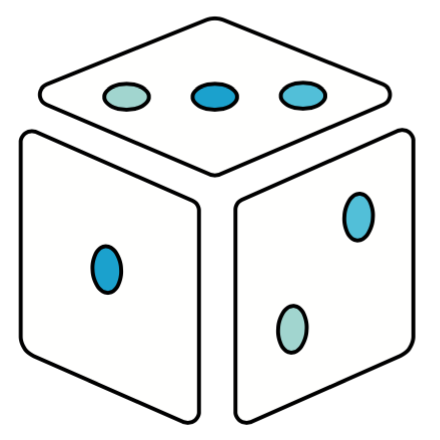
Abstract
Risk-related information — like the prevalence of conditions and the sensitivity and specificity of diagnostic tests or treatment decisions — can be expressed in terms of probabilities or frequencies. By providing a toolbox of methods and metrics, riskyr computes, translates, and visualizes risk-related information in a variety of ways. Offering multiple complementary perspectives on the interplay between key parameters renders teaching and training of risk literacy more transparent.
Motivation
The goals of riskyr are less of a computational and more of a representational nature, by addressing the expression in and translation between different formats of risk-related information. Whereas people find it difficult to understand and compute information expressed in terms of probabilities, the same information is easier to understand and compute when expressed in terms of frequencies. But rather than just expressing probabilities in terms of frequencies, riskyr allows translating between formats and illustrates the relationships between different representations in a variety of ways. Switching between and interacting with different representations fosters transparency and boosts human understanding of risk-related information.
Basic assumptions and goals driving the current development of riskyr include: 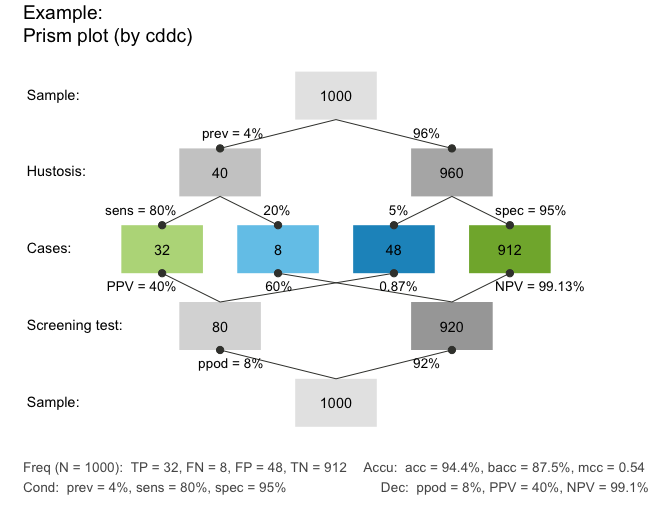
- Effective training in risk literacy requires transparent representations, smart strategies, and simple tools.
- We aim to provide a set of (computational and representational) tools that facilitate various calculations, translations between formats, and a range of alternative views on the interplay between probabilities and frequencies.
- Just as no single tool fits all tasks, no single graph illustrates all aspects of a problem. A variety of visualizations that illustrate the interplay of parameters and metrics can facilitate active and explorative learning. It is particularly helpful to view relationships from alternative perspectives and to observe the change of one parameter as a function of others.
Based on these assumptions and goals, we provide a range of computational and representational tools. Importantly, the objects and functions in the riskyr toolbox are not isolated, but complement, explain, and support each other. All functions and visualizations can also be used separately and explored interactively, providing immediate feedback on the effect of changes in parameter values. By providing a variety of customization options, users can explore and design representations of risk-related information that suit their personal needs and goals.
 Getting riskyr
Getting riskyr
- Install R package: Run install.packages('riskyr') in R
- Stable version at CRAN: https://CRAN.R-project.org/package=riskyr
- Development version: https://github.com/hneth/riskyr/
- Interactive online version: http://riskyr.org
- Online documentation: https://hneth.github.io/riskyr/
Visualizations
The following graphs illustrate some types of plots generated by riskyr:
 | 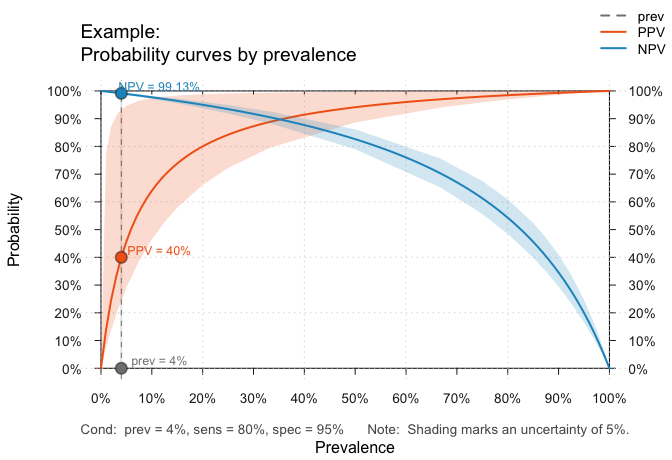 | |
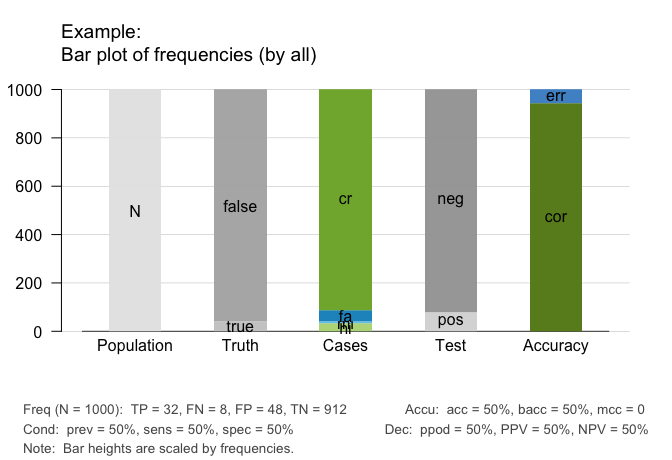 | 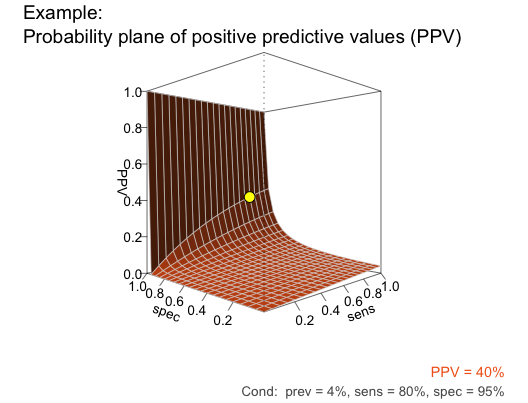 |
Resources: R package on CRAN | on GitHub | background article: Perspectives on the 2x2 matrix (open access)
